Will Donald Trump’s Re-Election Spell Disaster for Indian Immigrants in the U.S. Its Impact on Indian Immigrants and India’s Strategic Response
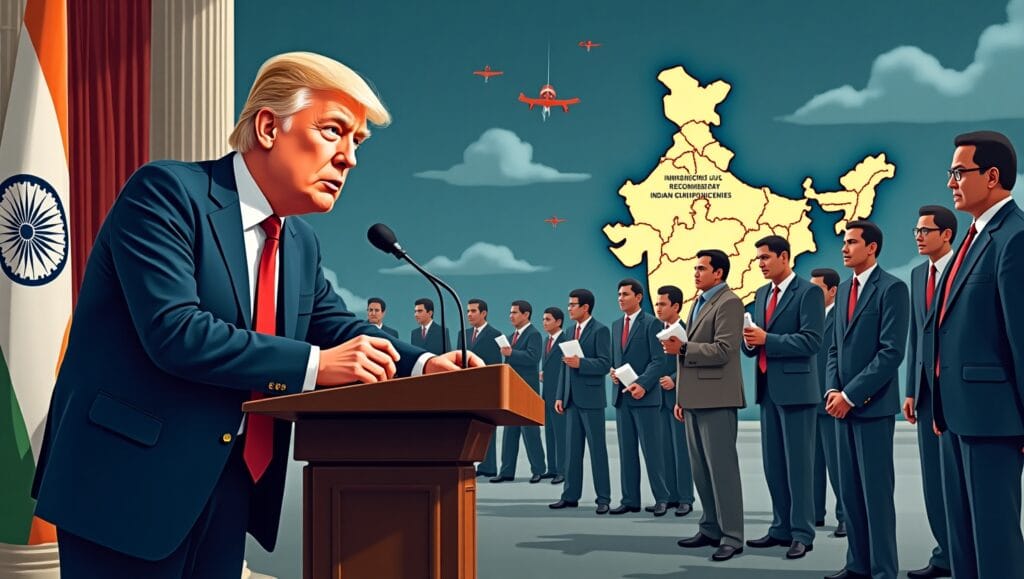
The re-election of Donald Trump to the presidency of the 47th President of the United States has largely offered a critical context for far-reaching and broad immigration reforms, which in turn has created a sense of fear and uncertainty among Indian immigrants in the United States. With the expectation that stringent and tough immigration policies will be enacted and implemented, both Indian immigrants who are in the United States legally and illegally are likely to encounter serious and daunting challenges as they navigate their lives in the next few years. However, behind these daunting challenges and obstacles that are likely to be encountered is a valuable opportunity for India as a nation to bolster its domestic economy, thereby allowing it to reposition itself on the global stage as a talent and innovation center that is highly sought after.
The H-1B Visa Challenge
The H-1B visa has been a lifeline and entry point for Indian professionals seeking to seek greater career prospects in the United States, especially in the highly competitive field of technology. Indian professionals have traditionally been able to secure about 70% of the total 85,000 H-1B visas that are made available annually. But with Trump’s second term, the signs are ominous that there could be an imminent crackdown on the long-running program. During Trump’s first presidential term, there was a shocking rise in H-1B denial of petitions, which increased to a shocking level of 24%, a far cry from the much lower denial percentage of just 2-4% that was seen during the Biden presidency. If this shocking trend continues, Indian professionals, particularly entry-level recruits, would face growing difficulties and challenges in seeking job opportunities in the United States.
This drastic change could be cataclysmic for India’s fast-growing IT industry, which is heavily reliant on the highly profitable American markets. In the 2024 fiscal year alone, the United States accounted for a whopping 54% of India’s total $205 billion worth of software exports. If H-1B policies continue to tighten, Indian IT companies could be forced to rethink their current strategies, which could be inimical to their reliance on the U.S. market and a search for alternative markets that could offer new opportunities for expansion and growth.

The Plight of Undocumented Indian Immigrants
Aside from the legal avenues of immigration that still remain open, the Trump administration’s very stringent and hardline policy against illegal immigrants is a very real and significant barrier to the estimated number of some 725,000 Indians already in the United States illegally. With the specter of mass deportations hanging precariously over their heads, the Indian government is going out of its way to make preparations to welcome thousands of its repatriating citizens who may be forced to return.
The recent mass deportations of over 100 Indian migrants are all the more effective in serving to reinforce the administration’s strong determination to uphold existing immigration policies, sending a very clear message that prospective large-scale repatriations are all but likely to occur in the very near future. For India, the repatriation of the deportees is a whole host of economic and social problems that are quite complex. Many of the individuals have, in effect, cut themselves loose from their country of origin, having sold property and accumulated debt to fund their emigration to the United States.
Their return not only represents an added financial burden on the country, but it is also accompanied by a social stigma that can render the repatriation process very problematic. Furthermore, the Indian government finds itself in the embarrassing position of having to balance maintaining good diplomatic relations with the United States while, at the same time, being forced to respond and react to domestic concerns regarding the implications of these deportations.
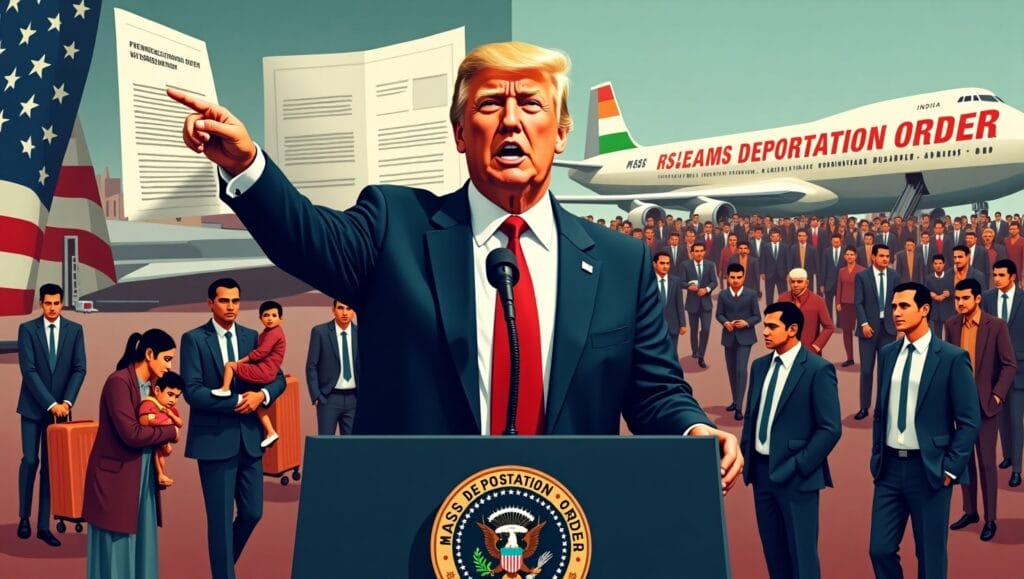
Navigating Internal Conflicts in U.S. Immigration Policy
In the Trump administration, there is a wide and extensive gulf as far as immigration policies are concerned, which is a direct consequence of the different points of view of powerful individuals and movements. At one end, there are powerful individuals like Elon Musk, who have benefited directly from the H-1B visa program, who are loudly calling for the continuation of this program. As per them, it is essential to continue this program in the same way so that the best of the best, highly qualified people, are attracted to help the American economy in a positive way.
At the other end of the political divide, the ‘Make America Great Again’ (MAGA) movement is opposed to this program. They are of the view that the H-1B program results in the displacement of American workers, depriving them of job opportunities, and is the cause of wage suppression in the majority of industries.
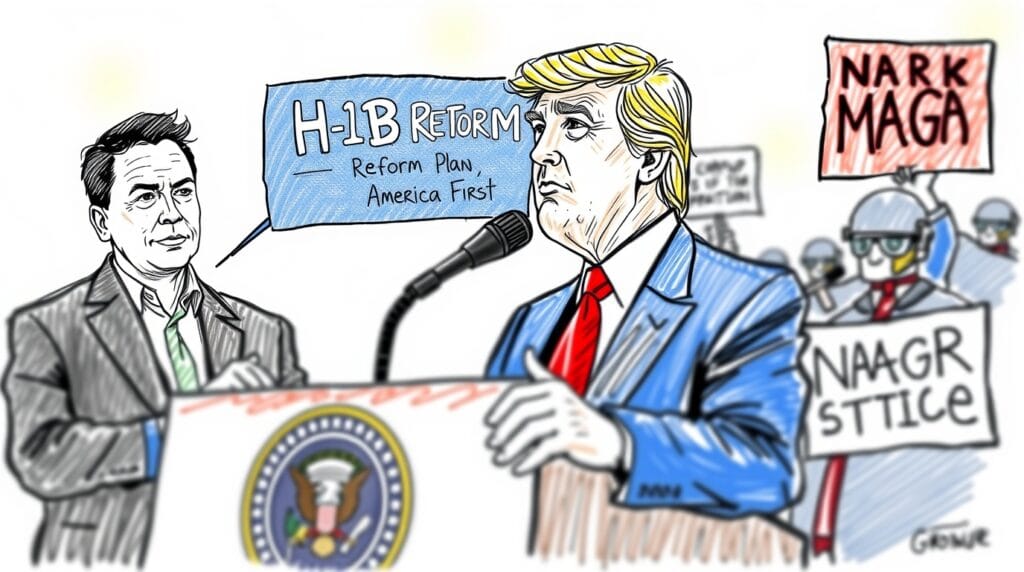
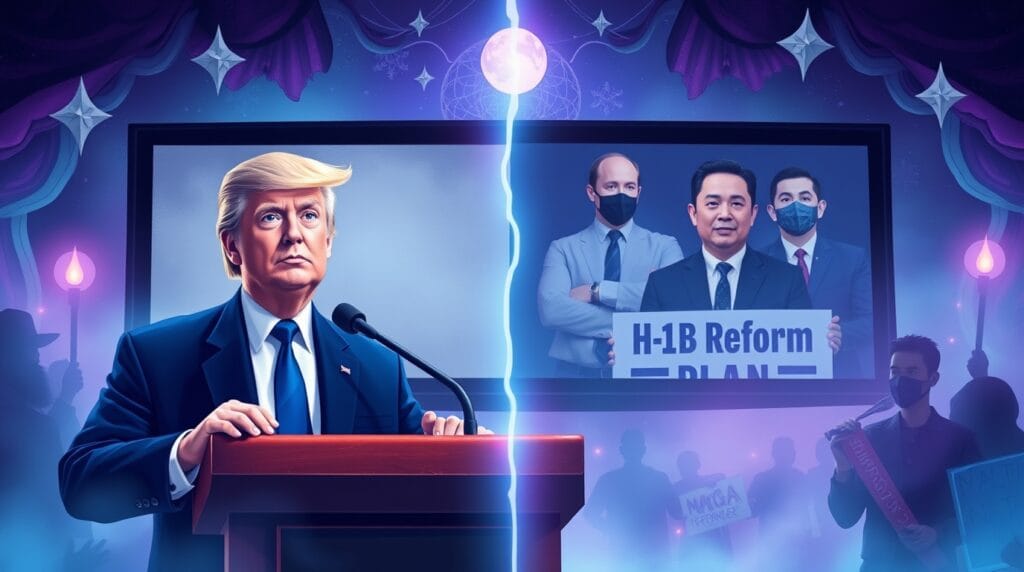
This internal conflict within the administration could result in a superior and superior immigration policy in the future. The administration could opt to have a hard and tough approach to the issues of illegal immigration while at the same time attempting to have a more balanced and equitable reform of the H-1B program. This policy would attempt to attract the best of the best professionals from across the world without compromising or undermining the job opportunities of American workers in the process.
Implications for Indian Students and Professionals
The new policy changes being contemplated can have long-term and far-reaching consequences on a huge population of about 330,000 Indian students already studying in universities in the United States. The additional uncertainty over visa policies, and work permits so essential for those who want to work after graduation, can serve as a deterrent to prospective students looking at their higher education prospects in the U.S., and it can also disrupt the well-laid-out professional career trajectory of those already pursuing studies in other institutions in the country. Further, Indian professionals already in the waiting list for Green Cards are in a stage of prolonged uncertainty, as any future change in the residency streams can fundamentally transform their long-term professional and personal aspirations in this competitive arena.
India’s Strategic Response
In the midst of the numerous problems that India is presently grappling with, there is a very obvious and clear window of opportunity for the country not only to consolidate its own internal economy but also to firmly position itself as a world-class global hub of innovation that is widely recognized across the globe. By actively promoting the growth and development of Global Capability Centers (GCCs) and by creating a business-friendly and supportive ecosystem, India can readily tap and tap its reservoir of skilled manpower right within its own country. Indian software firms may also increasingly be compelled to adopt a more diversified strategy tilt, which would entail restraining its existing reliance on the U.S. markets while, at the same time, seeking and tapping the numerous opportunities that are widespread in the various emerging economies of the world.
Secondly, in order to address the issue of reintegrating the return migrants into society, India must take proactive measures to prepare for their reintegration by establishing support mechanisms that assist them economically and socially. Such support must cover a broad array of basic services, such as job training schemes to assist them in securing employment, mental health services to assist them in recovering from any psychological trauma they may have experienced, and programs aimed at alleviating the societal stigma that typically accompanies their return.
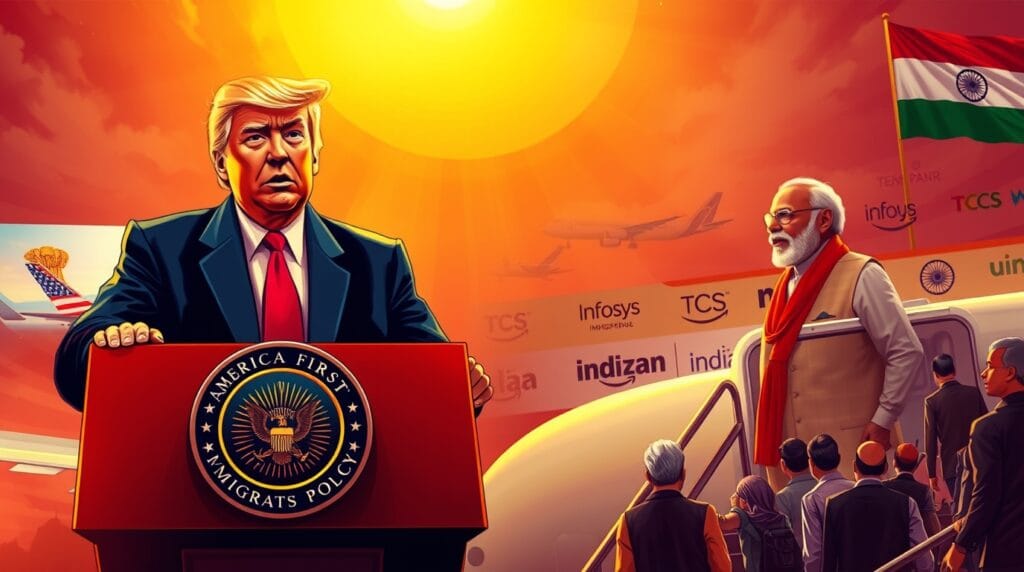










Leave a Reply